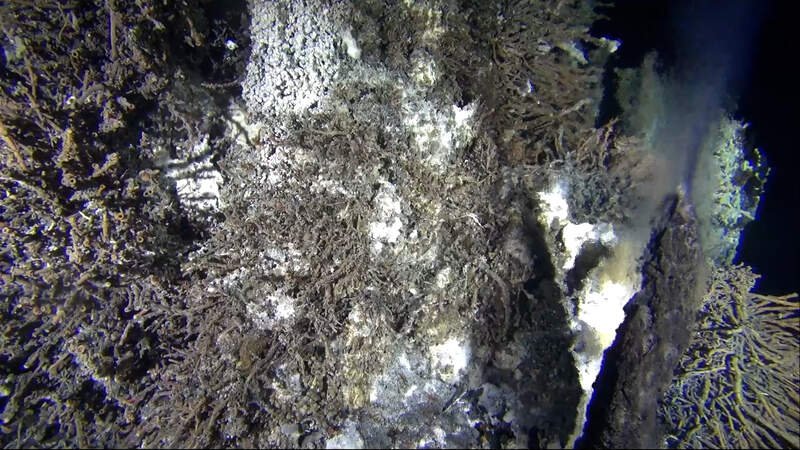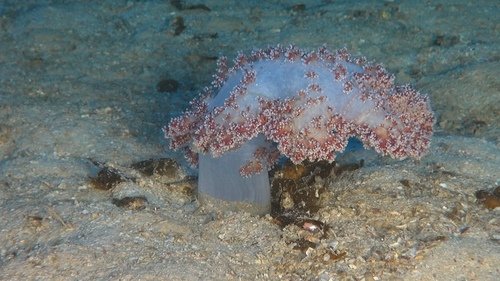Why It's Important to Have Underwater Low-Light Environment Capabilities in A Subsea Camera
Underwater cameras with low-light environment capabilities play a key role in ocean exploration, research, and industrial applications. These cameras capture high-quality images and videos of underwater environments, which are often dark and have low visibility due to various factors such as depth, turbidity, and the absence of sunlight. This means it is essential to have subsea cameras that can operate in low-light environments and provide clear and detailed images. This article discusses the importance of having underwater low-light environment capabilities in a subsea camera and what makes a subsea camera good in low light.
Why are Subsea Low-Light Cameras Needed?
The underwater environment presents unique challenges to subsea cameras, particularly when it comes to lighting. The water column absorbs and scatters light, which can cause significant reduction in image quality, particularly at depth.
What Makes a Subsea Camera Good in Low Light?
Several factors determine the performance of a subsea camera in low-light environments. These include the camera's sensor size, sensitivity, noise level, dynamic range, and lens aperture.
Sensor Size
The sensor size of a subsea camera is a critical factor in determining its performance in low-light environments. Larger sensors can capture more light, resulting in higher image quality and less noise, which is especially important in underwater environments where light is often limited. A larger sensor can also allow for larger pixels, which can capture more light and produce clearer images with less noise. Therefore, subsea cameras with larger sensors are generally better suited for low-light environments than those with smaller sensors. A larger sensor can also provide better depth of field and dynamic range, allowing for more precise control over the focus and exposure of the image.
As part of the Mk2 upgrade, the Rayfin Benthic subsea camera was outfitted with a new 12.3 MP sensor with zoom (5x optical equivalent). The new sensor is larger and has larger individual pixels. The result is better light sensitivity and ensures high sharpness and low distortion. High-quality 4K and HD digital stills and video are even easier to capture.
Sensitivity
The sensitivity of a subsea camera refers to its ability to capture light and convert it into an electrical signal. Cameras with high sensitivity can capture more light in darker environments, resulting in brighter and clearer images. Similar to a sensor quality, subsea cameras with high sensitivity are often equipped with larger pixels, which can capture more light and reduce noise.
Noise Level
The noise level of a subsea camera refers to the unwanted signals or distortions that can appear in images captured in low-light environments. The higher the noise level, the more grainy and distorted the images will appear.
Dynamic Range
The dynamic range of a subsea camera plays a crucial role in capturing clear and detailed images in low-light environments. In such conditions, the contrast between the bright and dark areas of the scene can be significant, making it challenging for conventional cameras to capture all the details. Subsea cameras with a wide dynamic range can capture a broader range of brightness levels, allowing them to retain more detail in the darker and brighter areas of the scene. This results in images with more accurate and lifelike colors, even in challenging lighting conditions.
Lens Aperture
The lens aperture is another essential factor that can make a subsea camera good in low light environments. The aperture determines the amount of light that enters the camera, with a larger aperture allowing more light to reach the sensor. In low-light environments, a larger aperture can help the camera capture more light and produce brighter and clearer images. It can also help to reduce noise and increase the sharpness of the images captured. However, a larger aperture can also result in a shallower depth of field, making it more challenging to keep the entire scene in focus. Subsea cameras with adjustable aperture settings are preferable, as they allow users to control the amount of light entering the camera while maintaining a suitable depth of field.
When are LEDs Needed with Subsea Cameras?
LEDs are sometimes necessary to provide additional lighting and illuminate the subjects being captured. In low-light environments, the amount of available natural light can be limited, making it difficult to capture clear images and videos. LEDs can be added to subsea cameras so supply this additional light and improve the quality of the images captured. LEDs can also be adjusted to provide the appropriate amount of lighting for the specific environment, ensuring that the images captured are well-lit without washing out any details.
The LEDs used in subsea cameras are often designed to emit light in the blue-green range, which is less absorbed by water than other wavelengths of light. This makes the light more effective in illuminating underwater subjects and producing clear, detailed images. Red LEDs are sometimes utilized in natural species behavior studies, as many sea creatures are incapable of perceiving the red spectrum. By implementing a red LED, it becomes feasible to capture images of biota in their natural behavior.
What are the Different Industry Uses of Low-Light Camera Capabilities?
Marine Science and Ocean Exploration
Having a subsea camera for marine observation and exploration with underwater low-light environment capabilities can be hugely beneficial. Low-light capability means that the camera is able to collect data in depths where little to no natural light reaches, allowing us to gain insights into previously unexplored parts of the ocean. For example, by having the ability to capture more detailed images and videos in low-light environments, scientists can track the movement of deep-sea species or document unknown reefs and formations.
Marine Conservation
Marine conservation efforts require accurate data and high-quality images of the underwater environment. Subsea cameras are used to survey coral reefs, monitor marine species, and map underwater habitats. These tasks often require capturing images in low-light conditions, particularly in deeper waters. By having low-light capabilities in subsea cameras, researchers can collect more accurate data and help to improve our understanding of marine ecosystems.
Offshore and Renewable Energy
Another significant application of subsea cameras with low-light capabilities is in industrial settings such as oil and gas exploration, underwater construction, and salvage operations. These applications often require subsea cameras to operate in low-light environments, such as inside pipelines, tanks, and shipwrecks, to inspect structures, locate leaks, and assess damage. Subsea cameras with low-light capabilities help provide clear images and videos of the underwater structures, enabling operators to make informed decisions and take appropriate actions.
Conclusion
In conclusion, subsea cameras with low-light environment capabilities are essential for exploring and studying underwater environments, conducting research, and performing industrial applications. These cameras allow us to capture clear and detailed images and videos of nocturnal and deep-sea animals, deep-sea ecosystems, and underwater structures. The performance of a subsea camera in low light depends on several factors, including its sensor size, sensitivity, noise level, dynamic range, and lens aperture. As technology advances, we can expect subsea cameras with even better low-light capabilities to emerge, opening up new possibilities for underwater exploration and research.


















